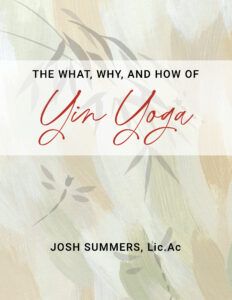As you undoubtedly are aware, mindfulness is gaining in popularity; it’s seemingly everywhere now. So much so that it has its own name: The Mindfulness Movement. And as with any sort of movement, there are its proponents and its critics.
Most of the criticism seems to express concern around the ethics of its application (Beyond McMindfulness), or about the under-publicized potential for dark and negative experiences to occur as a result of the practice (The Mindfulness Backlash). I will address each of these issues in later posts, but I’d like start this year with a more basic consideration of how we approach defining mindfulness, itself. And this will likely have me contradicting something I may have written in the past. In my own practice, I often find it necessary to revise my conceptualization of things, especially as my experience of those concepts changes and adapts. This personality flaw has regrettably kept me from pursuing political office.At the moment, I’m finding the prevalent definition of mindfulness in need of some revision and/or expansion. This definition comes from Jon Kabat-Zinn who has, arguably, done more than anyone to mainstream the practice of mindfulness. And I think anyone practicing mindfulness is in some way indebted to his pioneering work. So my intention here is not so much to criticize his definition but to maybe refine and update it.
Here is how Kabat-Zinn defines mindfulness: “Mindfulness means paying attention in a particular way: on purpose, in the present moment, non- judgmentally.” There are three basic aspects of Kabat-Zinn’s definition: mindfulness is a kind of attention that is a) on purpose, b) in the present moment and c) without judgment.
The first of these is likely the easiest to challenge. The characteristic of volitional and purposeful intent, ie. “on purpose” appears as central to the Kabat-Zinn definition. But I wonder — and I encourage you to reflect on this in your own practice — is this entirely true? Is it true we’re only mindful when we’re doing it ‘on purpose’? What about all the moments when awareness naturally and spontaneously comes on-line to the perception of immediate experience, seemingly by itself? Do these spontaneous moments of clear awareness not count as mindfulness? I speculate that Kabat-Zinn would probably agree that these spontaneous experiences of mindfulness do, in fact, count and are actually the implicit goal – ie. to increase the number of moments when present moment awareness spontaneously arises on its own.
So why question this aspect of the definition at all? Because if ‘being mindful’ is depicted as doing it ‘on purpose’ this will reinforce the sense-of-self that has to purposefully ‘be mindful’. And this is problematic in two broad ways. For one, it will inhibit the experience of flow. In a course I co-teach at Boston University on mindfulness and performance, we explore how mindfulness can help create the conditions for a flow state to emerge. Flow, by definition, is any activity performed with the feeling of focused immersion, often characterized by the loss of self-consciousness. Therefore, practicing mindfulness with the explicit intention of doing it ‘on purpose’ could very likely reinforce a self-conscious mindset that ultimately obstructs flow.
Secondly, if the aim of your mindfulness practice is more aligned with the Buddhist goal of transcending or deconstructing your very sense-of-self, laboring away from the position of a self can lead you into a cul de sac of selfness. The last post here examines this theme.
So how might we approach the practice in a way that doesn’t lead to the striving and the laboring of doing it ‘on purpose’?
One suggestion would be to link the purposefulness to our intention rather than to our moment to moment agenda. By this I suggest at the beginning of practice that you purposefully set up the intention to be mindful, but then back off and let your mind flow with the arising content of your experience. From time to time, you might re-energize that intention with a sense of purpose, but you wouldn’t be constantly bearing down on yourself: ‘be mindful’, ‘be more mindful.’
It was Ajahn Chah, I believe, who used the analogy of keeping a water buffalo on a path. If the water buffalo walks too far the right, the herder nudges the animal to the left; and if the water buffalo walks too far to the left, the herder nudges the animal to the right. But when the water buffalo is going straight, the herder let’s it go on without nudging it at all.
As I explore the other aspects of Kabat-Zinn’s definition in coming posts, I will be formulating candidates for a revised definition of mindfulness. But until then, I welcome your thoughts and reflections.
Originally published on January 23, 2015
Practice Opportunities:

